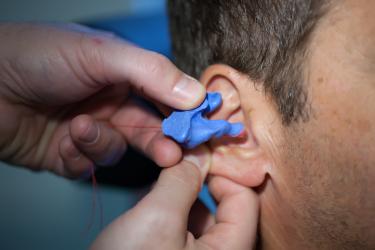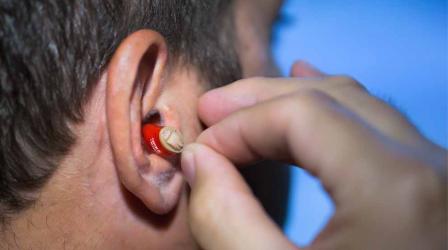-
Company
-
Brands
- A House of Brands
-
Hearing Instruments
-
Consumer HearingConsumer Hearing
-
Cochlear ImplantsCochlear Implants
-
Audiological CareAudiological Care
- AudioNova - Brazil
- AudioNova - Denmark
- AudioNova - Italy
- AudioNova - Sweden
- Audition Santé - France
- Boots Hearingcare - UK & Ireland
- Connect Hearing - Australia
- Connect Hearing - Canada
- Audiological Care US
- Geers - Germany
- Geers - Hungary
- Geers - Poland
- Hansaton - Austria
- Lapperre - Belgium
- Schoonenberg - Netherlands
- Triton Hearing - New Zealand
-
Investors
- Investors overview
- Ad hoc announcements
- Why invest in Sonova & strategy
- Presentations & webcasts
-
Financial reports
- Current outlook
- Key figures
- Financial calendar
-
Corporate governance
-
Sonova shares & bondsSonova shares & bonds
- General Shareholder's Meeting
- Services & contacts
- Newsroom
-
Careers
- Your career with us
-
Apply now
-
Why Sonova
- Get to know our talents
sonova global
- Global
-
North America
North America
-
Pacific
Pacific
-
Latin America
Latin America
- Asia
- Europe
Global
North America
Pacific
Latin America
Asia
Europe
-
Company
-
Brands
Brands
- A House of Brands
- Hearing Instruments
- Consumer Hearing
- Cochlear Implants
-
Audiological Care
- AudioNova - Brazil
- AudioNova - Denmark
- AudioNova - Italy
- AudioNova - Sweden
- Audition Santé - France
- Boots Hearingcare - UK & Ireland
- Connect Hearing - Australia
- Connect Hearing - Canada
- Audiological Care US
- Geers - Germany
- Geers - Hungary
- Geers - Poland
- Hansaton - Austria
- Lapperre - Belgium
- Schoonenberg - Netherlands
- Triton Hearing - New Zealand
-
Investors
Investors & financials
- Investors overview
- Ad hoc announcements
- Why invest in Sonova & strategy
- Presentations & webcasts
- Financial reports
- Current outlook
- Key figures
- Financial calendar
- Corporate governance
- Sonova shares & bonds
- General Shareholder's Meeting
- Services & contacts
- Newsroom
-
Careers
Careers at Sonova
- Your career with us
- Apply now
- Why Sonova
- Get to know our talents
sonova global
Choose your country
- Global
-
North America
North America
-
Pacific
Pacific
-
Latin America
Latin America
- Asia
- Europe
Global
North America
Pacific
Latin America
Asia
Europe

3D printing technology for improved hearing
At the beginning of this millennium, Sonova was one of the first companies in the world to employ innovative 3D printing technology for production. Today, 3D printing has long been the standard at Sonova: All the shells for custom in-the-ear hearing aids as well as various custom earpieces for behind-the-ear and receiver-in-canal hearing aids are produced using 3D printers. This enables the shape of the shell to be tailored optimally to the wearer's individual ear canal and degree of hearing loss.
Mass-produced custom-made products
Sonova has been advancing the industrial use of 3D technology for many years. At the beginning of the millennium, Sonova was one of the very first companies to start digitally producing shells for custom in-the-ear hearing aids, followed by custom earpieces for behind-the-ear and receiver-in-canal hearing aids. At the time, this pioneering technology represented a breakthrough in the modernization and digitalization of hearing-aid manufacturing. Previously, production had been the sole preserve of modelers who finished each unique piece by hand in a time-consuming and costly process. Digital manufacturing of custom in-the-ear hearing aids started in 2001/2002. Engineers developed the necessary tools – scanner, software, and printer – and then these were adapted to Sonova's specific requirements. In the years following, the technology was continuously improved and refined, and increasingly also employed to model the earpieces for behind-the-ear hearing aids. Since 2001, RSM (Rapid Shell Modelling) software developed in collaboration with Sonova’s partner Materialise ensures that computer-aided modeling can be done even more easily and efficiently.
Layer by layer from nothing
First, silicone impressions of the ear canal (which are still taken by hand) are scanned into the computer using laser technology. Further processing is then carried out digitally on-screen. Once a hearing aid shell has been finished on the computer, the file with the three-dimensional structure is stored in a central database and transmitted to the 3D printers at the production site. The actual printing is a fascinating process to watch: Layer upon layer of light-curing acrylic resin appears to be built up from nothing to form the new hearing aid shell.
Harnessing this technology, Sonova is able to mass-produce hundreds of thousands of custom-made products every year. Despite the high quantities involved, each product differs in its shape and is tailored to suit the individual needs of each wearer. This is the most impressive demonstration of the huge potential of 3D printing.



















Quickly delivered to customers
The use of 3D printing technology means that the hearing aid shells produced by Sonova across the world meet the same high standards of quality. The entire digital production chain can be closely controlled, giving Sonova a competitive advantage. Once an order is placed, it takes just a few days for the finished product to be delivered, and the customer receives a hearing aid with optimal fit.